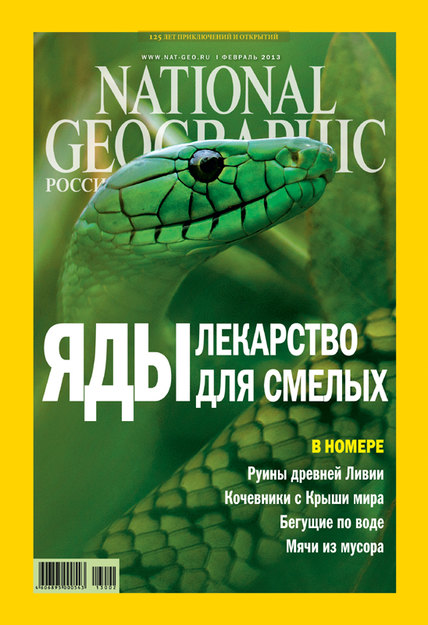National Geographic Russia in February

The main story in the February issue of National Geographic Russia is devoted to poisons. They can be used to help treat illness. But as of today, only a small fraction of all known toxins have been studied. That leaves room for hope that the 20 million poisons found in nature may one day help cure a variety of illnesses and, perhaps in the next decade, pain medications based on poison will be developed.
Also in this issue:
Space archeology. Satellite images help locate buried kingdoms.
Cartographers to the rescue. A new look at disasters: Internet maps will guide rescuers to the scene.
Passing on happiness. The soccer ball is one of the few sources of joy for many African boys, and they make the balls themselves using whatever materials they have on hand.
Skimming across the water. The ability of insects, birds and other animals to run on water has attracted the attention a range of scientists: bioengineers, physical chemists and biophysicists. What do they hope to learn from these agile creatures?
The new ancient Libya. What is life today in a country once famous for its magnificent monuments produced by different eras and peoples: ancient temples, Roman amphitheaters and palaces of the Ottoman Empire?
The chocolate predator. Having survived the threat of extinction, otters are once again full-fledged regents of England’s rivers.
The Wakhan Corridor. That is the name of this 20-kilometer-wide strip of land in the Pamir mountains of Afghanistan. Amazingly, Kyrgyz nomads manage to live here in this brutal land that is savaged by harsh winds, cut off from the outside world and a test of the limits of human endurance.
The issue was released for sale on January 29.


